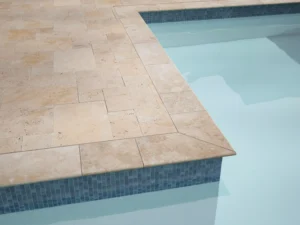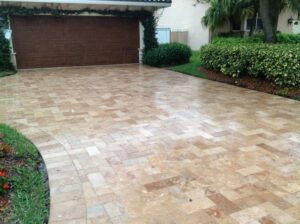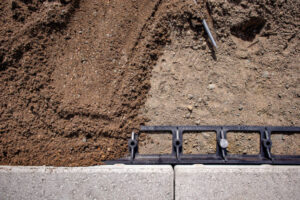Choosing what type of pavers you are going with is one of the first important decisions you will have to think through when starting a paver project. And when that happens is impossible not to get caught up on the Brick vs Concrete debate.
Which one is cheaper? Which one lasts longer? How are they different? You will find the answer to all your questions in our full comparative analysis.
Jump to:
Brick vs Concrete Pavers: Understand how they are different
Most people start to consider these two choices without having a clear perception of what the difference between brick and concrete pavers really is. So let’s get that sorted out right now.
What are brick pavers?
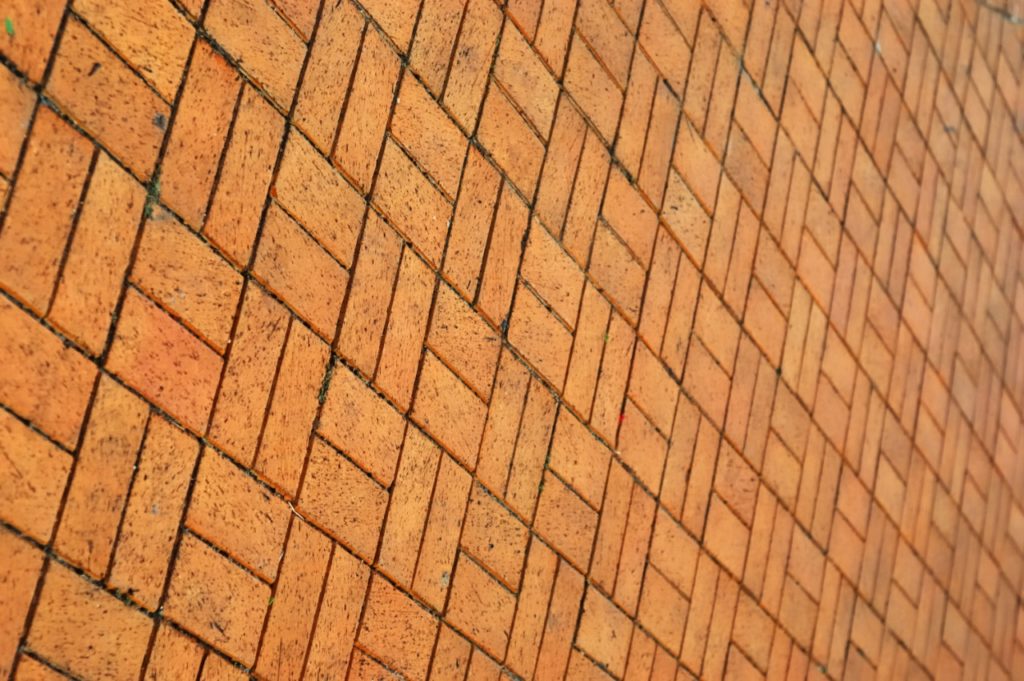
When discussing brick pavers the word “brick” is referring to the material these pavers are made of, and not to their format. That’s where most of the confusion comes from,
Brick pavers are made of clay, cast in forms and then heated, and can be obtained naturally on many colors by mixing various types of clay.
These pavers offer a classic, natural look, that’s been cherished for generations. We will discuss that later on.
On this article, we’re not talking about any brick paver that’s not made of clay. You might see concrete bricks being sold with this name because they are mimicking brick’s shape.
What are concrete pavers?
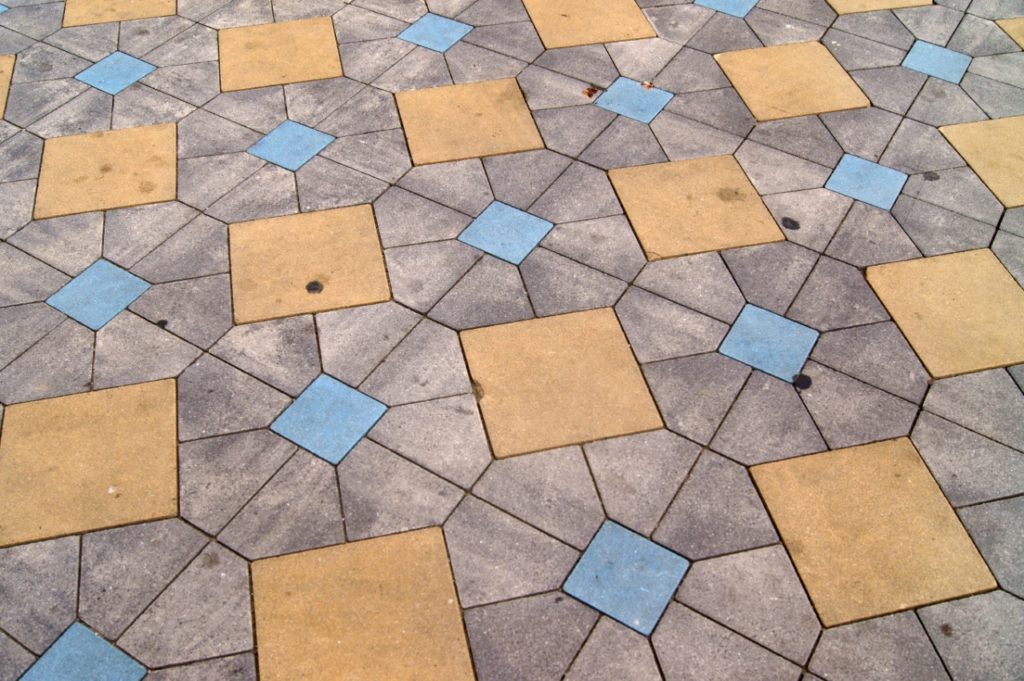
Well, that’s the easy one, concrete pavers are simply pavers made from cement. They have become quite popular over the years due to their price and versatility.
Now that the basics have been covered, let’s get into the differences between both of these great paver material options.
Appearance
Both concrete and brick pavers are options sure to make a project look great, however they offer completely different design possibilities.
Brick pavers are normally supplied on standard rectangular sizes. Bricks are colored naturally through the mixture of different types of clays, therefore, there isn’t much to choose from, and you will be limited to shades of tan, red and brown.
When it comes to color and size diversity, concrete pavers take the lead. They are supplied in a wide variety of formats, and since they are pigmented, they can also be found in almost any imaginable color.
Durability
Analyzing who comes on top in the brick vs concrete pavers durability debate is not an easy task, since there are at least 2 factors involved.
Which material will look good for longer, and which material will last longer overall.
Color retention
The fact that brick pavers are naturally colored by the color of the clay they are made off gives them the edge initially. Bricks are able to maintain their color for longer than concrete. We’re talking generations vs decades here.
Concrete pavers, on the other hand, will discolor with time (many years) if their pigments are frequently exposed to sunlight. It’s important to note that if concrete pavers are sealed regularly that won’t ever be a problem.
Resistance to damages
When it comes to resistance to damages both materials are able to do a great job, being able to withstand more than 10,000 psi. The main difference here is that bricks will sometimes break, crack, or chip. Those things won’t happen to concrete, however, concrete’s structure will erode with time, if not taken care of properly.
While broken pavers are terrible, eroded pavers look worn out. We can’t really say we have a preference. Luckily it’s extremely simple to replace only the pavers that present problems, no matter which material they are made of.
Style
Brick pavers are the perfect choice for those looking to achieve that classic, timeless style, both due to their color and format. Brick patios have been trending for centuries, and they still do.
Concrete pavers are the most versatile choice though, they are sold in a multitude of sizes, shapes and colors. Concrete fits any project, including those aiming at a classic look, cause it can also be used to mimic brick and natural stone pavers.
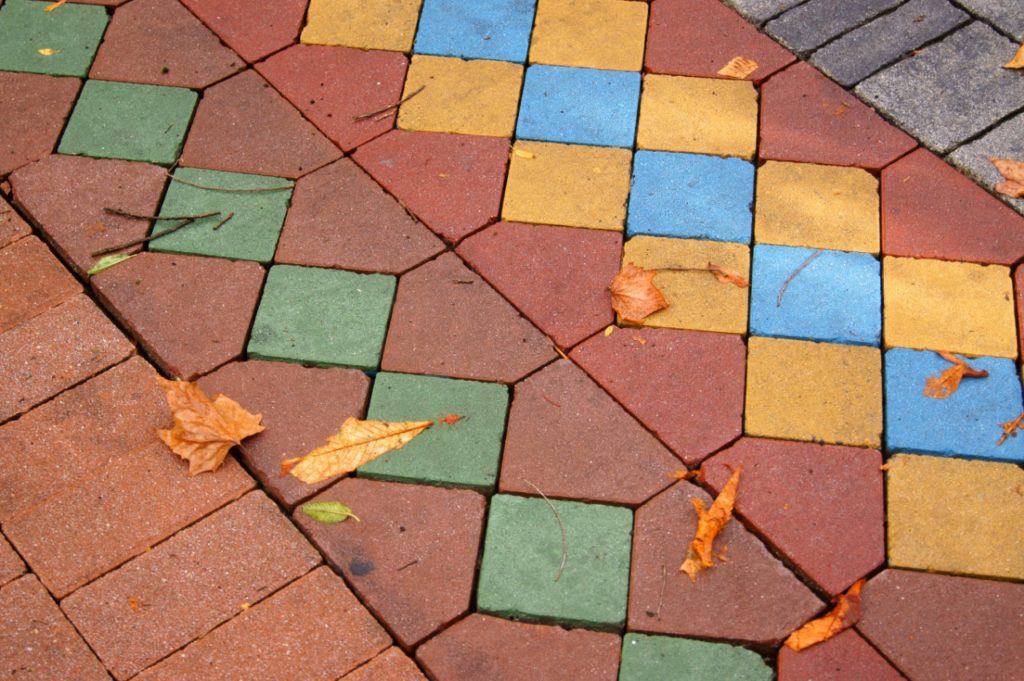
Cost
While both brick and concrete pavers are offered in low and high-quality options, brick paver projects tend to cost 15% to 20% more than concrete projects.
According to home advisor data updated in 2020, the average cost per square foot of brick pavers ranges from $4 to $8, while that of concrete pavers ranges from $2.5 to $5, those values are not including installation costs.
When installation costs are included, the same research points towards $10-$20 per square foot for brick pavers and $8-$15 per square foot for concrete pavers.
What about maintenance?
All pavers require basic cleaning and sand refilling from time-to-time. However, concrete pavers come with the extra requirement of periodical sealing.
While sealing concrete pavers is not mandatory, it’s highly recommended. As you’ve seen in some points we touched on this analysis, sealing is what makes it possible for concrete pavers to actually last longer than brick pavers while still looking great.
Brick vs Concrete Pavers: How to make the choice
As you’ve probably noticed, both these materials are highly resistant, good-looking and offer a different set of pros and cons. This is not an easy choice.
Two things that normally tilt the balance of this analysis toward either one of the sides is the style the homeowner is trying to achieve and their budget.
Those looking for a classic timeless style, tend to go with bricks rather than concrete if their budget allows. Those with a smaller budget or with design goals that can be better achieved with concrete, tend to go with concrete.
Whatever you choose, be sure you’re making a great choice for going with pavers.
If you live in Sarasota or Manatee County, call us for free paver counseling or scheduling a free estimate.

